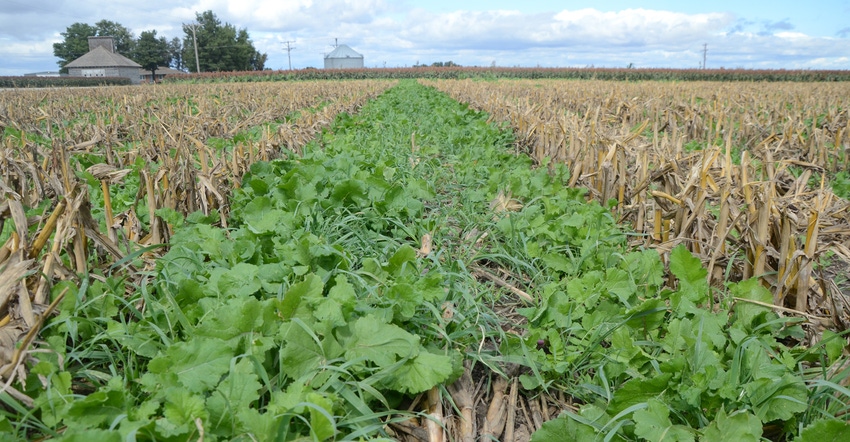
Editor's note: You can listen to my conversation with Aaron Hird by clicking on the Soundcloud link embedded in this blog.
Aaron Hird, Nebraska Natural Resources Conservation Service soil health specialist, defines soil health as the continued capacity of the soil to function — in other words, the ability to continue to hold water, cycle nutrients, host soil biology and remain resilient in the wake of weather extremes such as heavy rainfall or dry periods.
As part of Nebraska NRCS' Soil Health Initiative, which kicked off in 2016, farms in 17 Nebraska counties are serving as soil health demonstration sites. This gives growers, NRCS and their partners in the project — the University of Nebraska-Lincoln, Nebraska Extension and the Nebraska On-Farm Research Network — a chance to observe and measure soil health indicators and their improvement over time through cover cropping and other practices used to build soil health.
Showing the results of these practices through demonstration plots helps communicate clear advantages.
In the latest Down in the Weeds, we spoke with Hird about findings from these plots and other research on practices such as no-till and cover crops — and their effect on infiltration rates and bulk densities.
"When all of those pieces of the management system go toward promoting soil health, that field can really change," Hird says. "There's been a lot of research across the nation that has portrayed that, and it's starting to be done more and more on-farm. That really matters because I believe when research is done on-farm, it can be believable. You can have a lot more confidence in what we're portraying and the findings we discover."
About the Author(s)
You May Also Like






